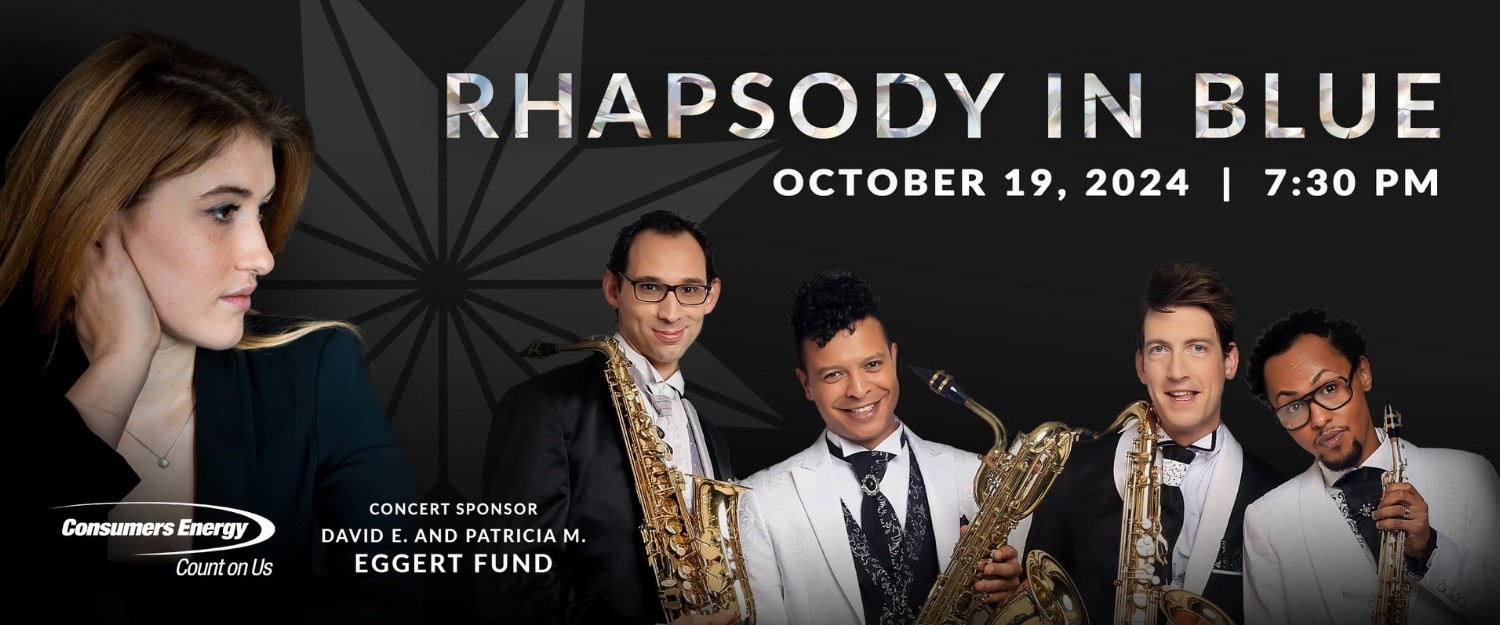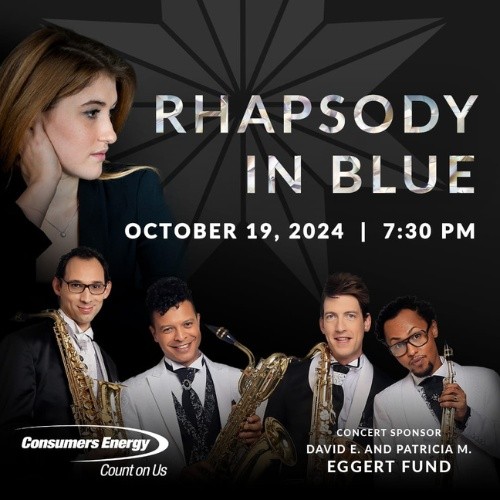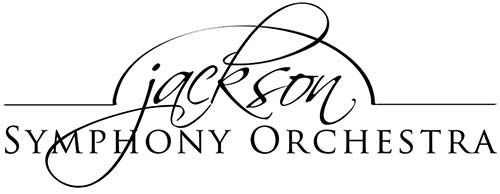

PROGRAM NOTES
October 19, 2024
Skyward! | Jonathan Bruce Brown (2018)
Former Composer-in-Residence Bruce Brown wrote Skyward! the summer of 2016 as a gift for the JSO’s new Music Director, Matthew Aubin.
I watched, with all of you, as several fine musicians conducted the orchestra as an audition, hoping to take Maestro Stephen Osmond’s place. Everyone seemed surprised to find that an outstanding conductor, the Artistic Director of New York’s Chelsea Symphony and a consultant on the Golden-Globe-winning program Mozart in the Jungle, had quietly moved to Jackson.
Matt’s wife, Michelle, had joined the staff of Henry Ford Jackson Hospital as an orthopedic surgeon. They felt Jackson would be a fine place to live, and he could commute to New York to fulfill his duties there.
Matt’s selection as Music Director has brought another outstanding talent to the podium, and it continues Jackson’s enviable, and very significant, tradition of having a conductor who lives here and is an integral part of the community.
The inscription for Skyward! reads: “For Matt Aubin, in celebration of his leadership of the Jackson Symphony Orchestra and The Chelsea Symphony.”
In all my work, I try to capture a sense of the inner life that motivates all of us to dream, hope, love, strive, and when it is needful, to change and grow. I have come, more and more, to consider myself a storyteller, hopefully saying things with music that may be difficult or impossible to put into words.
My purpose in Skyward! was to create a sense of enthusiasm, boundless energy and limitless possibilities. The opening fanfares represent the wide-open, blue-sky optimism of new beginnings. Poignant harmonies in the middle section evoke the spirit of inward, thoughtful dreams and ambitions we all share. Lyric solos in the oboe, flute and trumpet mirror quiet hopes we may not dare to utter aloud. The bold opening sounds return to lead the work into a powerful finish, full of determination and promise.
Written by Jonathan Bruce Brown
Prélude à “L’après-midi d’un faune” (Afternoon of a Faun) | Claude Debussy (1891-1894)
While others, notably Franz Liszt, were on the forefront of stylistic change during the nineteenth century, it is surely Claude Debussy who forever established entirely new ways of thinking about the fundamental ways of defining and composing music in Western culture.
His poem, L’après-midi d’un faune (1876), is the subject of Debussy’s one-movement “tone poem,” and is his most recognized work. While the text concerns the awakening of a faun from a drowsy mid-afternoon nap, and his reflections on his memories of his adventures with nymphs that morning, the narrative is not straightforward and linear—and neither is Debussy’s score. A faun, of course, is a creature that is half goat and half man, symbolic in literature of untrammeled natural spirits, and nymphs are young, nubile free spirits who sing and dance their way to amorous freedom.
The tone poem in the hands of masters such as Liszt, Smetana, and Strauss generally has focused on very specific images and the stories behind them. But, the genre in the hands of Debussy (under the influence of the symbolists) approached the text in a much different way. His Prelude to the Afternoon of a Faun (1894), from the immortal opening languid, sensuous flute solo, creates an episodic series of feelings, atmospheres, and reflections rather than a story. The faun, half-dulled by the afternoon heat thinks random thoughts of “. . . enervating swoon of heat, which stifles all fresh dawn’s resistance”; “. . . girls sleeping, with their reckless arms around each other”; and “. . . my speechless soul and heavy-laden body succumb at last to noontime’s ceremonial pause.”
For these thoughts and moods Debussy crafted perfect orchestral colors, melodies, and harmonies. While not a follower of Brahms—nor, on the other hand, of Liszt, Wagner, and Strauss, either–Debussy, with this first great success, opened the door to the twentieth century in music, and it was never the same thereafter.
Written by William E. Runyan
A Dream for Artemis | Fabien Waksman (2024)
Fabien Waksman (b. 1980) is one of the most significant French composers of his generation, known for blending classical traditions with modern musical landscapes. A graduate of the Paris Conservatory, Waksman has received numerous awards, including the André Caplet Prize in 2011 and the Victoires de la Musique award in 2023. His works, often inspired by science and cosmology, are performed by leading orchestras across Europe.
A Dream for Artemis is a concerto for saxophone quartet, paying homage to humanity’s conquest of space from 1957 to the present day. The piece opens “in an atmosphere of great excitement. Cape Canaveral on July 11, 1969, just before the launch of Apollo 11… thousands of people from various cultural backgrounds and walks of life are gathered to attend an event that will leave its mark on history: for the first time, Mankind is venturing out of its cradle.” The saxophones and orchestra reflect both the excitement and the tension surrounding the event.
As the piece unfolds, Waksman captures “a succession of contrasting atmospheres,” intertwining various themes to reflect the anxiety of NASA engineers and the enthusiasm of the crowd. The saxophone quartet, symbolizing astronauts, guides the listener through this journey.
In the second and third movements, Waksman explores the triumphs and tragedies of space exploration, notably the 2003 loss of the Columbia shuttle. The music shifts to reflect the gravity of the disaster, with “growling multiphonics”symbolizing the danger and tragedy. The weightlessness theme returns, evoking the loss and sorrow felt worldwide.
The final movement looks to the future, celebrating the upcoming Artemis missions. Waksman writes, “On a fiery septuple meter, the spaceship lifts off and dances all the way to the lunar landing site of the Orion module, close to the moon’s south pole.” The concerto concludes with a sense of hope and humanity’s enduring spirit of exploration, reminding us that “the desire to know is inherent in human nature.”
Black, Brown and Beige: Suite | Edward Kennedy “Duke” Ellington (1943)
Duke Ellington (1899-1974) was a pioneering figure in jazz, renowned for his ability to blend jazz with classical forms and reflect the African American experience. Black, Brown and Beige, which premiered at Carnegie Hall in 1943, is one of Ellington’s most ambitious works. The suite, subtitled “A Tone Parallel to the History of the Negro in America,” is divided into three movements: “Black” portrays the pain and endurance of slavery, “Brown” focuses on emancipation and military service, and “Beige” reflects the contributions of African Americans to American culture.
Though the premiere received mixed reviews for its bold blend of jazz and symphonic elements, Black, Brown and Beige has since been hailed as a milestone in American music, bringing jazz into the concert hall and offering a powerful narrative of African American history.
Rhapsody in Blue | George Gershwin (1924)
This year marks the centennial of Rhapsody in Blue, one of George Gershwin’s most celebrated works that bridges the worlds of jazz and classical music. Commissioned by bandleader Paul Whiteman for his concert, “An Experiment in Modern Music,” held on February 12, 1924, at New York’s Aeolian Hall, Rhapsody in Blue emerged as a groundbreaking piece of American music. Gershwin, who initially forgot about the commission, composed the work in just a few weeks, drawing inspiration from the rhythmic sounds of a train ride, which he later described as a musical “kaleidoscope” of America’s cultural diversity.
The now-iconic opening clarinet glissando was a spontaneous improvisation during rehearsals by clarinetist Ross Gorman, which Gershwin enthusiastically incorporated into the final score. Gershwin himself performed the piano solo at the premiere, improvising several sections, as the piano part had not been fully written.
Originally orchestrated by Ferde Grofé for Whiteman’s jazz band, Rhapsody in Blue has since been adapted for full orchestra and remains a symbol of the Jazz Age. Its blend of syncopated jazz rhythms, blues-infused melodies, and classical structure continues to captivate audiences, marking a major milestone in American music history.
PROGRAM SCHEDULE
Jonathan Bruce Brown
Skyward!
Claude Debussy
Prélude à “L’après-midi d’un faune” (Afternoon of a Faun) <1891–1894>
Fabien Waksman
A Dream for Artemis (2024)
Edward Kennedy “Duke” Ellington
Black, Brown and Beige: Suite (1943)
George Gershwin
Rhapsody in Blue (1924)
| RUNTIME: 1H 45M |
